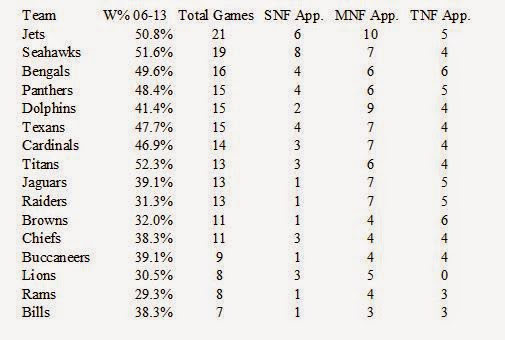During bowl season, coaches will often say they are excited for the opportunity to travel to a new city and play against a good team in a finishing bowl game. Coaches won't publicly slight the city even if it's not considered a vacation destination and they wouldn't disrespect an opponent either.
However, with public Coaches' poll ballots, we can find out what a coach really thinks about their bowl opponent (though some coaches may hand their ballot to someone else in the athletic department). These ballots were completed just before bowl games and opponents were announced.
Most opposing coaches agreed with each other that one of the two teams in the bowl is superior. Only the Holiday Bowl had the coaches rank the teams in different orders and one of the coaches has been fired (Bo Pelini). As I mentioned in the blog when ballots were released, there is overwhelming evidence for familiarity bias in the polls. Coaches in the same conference rated their teams higher than coaches from other conferences for 33 of 36 teams. There were also quite a few coaches who ranked their own teams extremely high.
Anyway, here's how they voted:
Sugar Bowl:
However, with public Coaches' poll ballots, we can find out what a coach really thinks about their bowl opponent (though some coaches may hand their ballot to someone else in the athletic department). These ballots were completed just before bowl games and opponents were announced.
Most opposing coaches agreed with each other that one of the two teams in the bowl is superior. Only the Holiday Bowl had the coaches rank the teams in different orders and one of the coaches has been fired (Bo Pelini). As I mentioned in the blog when ballots were released, there is overwhelming evidence for familiarity bias in the polls. Coaches in the same conference rated their teams higher than coaches from other conferences for 33 of 36 teams. There were also quite a few coaches who ranked their own teams extremely high.
Anyway, here's how they voted:
Sugar Bowl:
Urban Meyer (Ohio State): Alabama 1, Ohio State 4
Nick Saban (Alabama): Alabama 1, Ohio State 4
Rose Bowl:
Jimbo Fisher (Florida State): FSU 1, Oregon 3
Cotton Bowl:
Art Briles (Baylor): Baylor 3 (extreme), Michigan State 8
Mark Dantonio (Michigan State): Baylor 5, Michigan
State 7
Bob Stoops (Oklahoma): Clemson 18, Oklahoma 22
Dabo Swinney (Clemson): Clemson 15, Oklahoma 25
Military Bowl: Virginia Tech won 33-17.
Frank Beamer (Virginia Tech): Cincinnati 25, VT NR
Tommy Tuberville (Cincinnati): Cincinnati 20 (extreme), VT NR
Miami Beach Bowl: Memphis won 55-48 in triple-overtime.
Justin Fuente (Memphis): Memphis 22 (extreme), BYU NR
Bronco Mendenhall (BYU): Memphis NR, BYU NR
Belk Bowl: UGA won 37-14.
Mark Richt (Georgia): UGA 12, Louisville 20
David Cutcliffe (Duke): ASU 17, Duke 22
Boca Raton Bowl: Marshall won 52-23.
Boca Raton Bowl: Marshall won 52-23.
Rod Carey (Northern Illinois): NIU 20 (extreme), Marshall 25
Bitcoin St. Petersburg Bowl: NC State won 34-27.
George O’Leary (UCF): UCF 21 (extreme), NC State NR
George O’Leary (UCF): UCF 21 (extreme), NC State NR














